This movement first appeared in 1950s in Britain by a Independent Group in London.Meeting informally at the Institute of Contemporary Arts: Alloway, Alison and Peter Smithson, Richard Hamilton,Eduardo Paolozzi and others discussed the growing mass culture of movies, advertising, science fiction, consumerism, media and communications, product design and new technologies originating in America, but now spreading throughout the West. At the first Independent Group meeting in 1952, co-founding member, artist and sculptor Eduardo Paolozzi presented a lecture using a series of collages titled Bunk! that he had assembled during his time in Paris between 1947–1949. This material consisted of "found objects" such as, advertising, comic book characters, magazine covers and various mass produced graphics that mostly represented American popular culture. One of the images in that presentation was Paolozzi's 1947 collage, I was a Rich Man's Plaything, which includes the first use of the word "pop″, appearing in a cloud of smoke emerging from a revolver. They were fascinated by advertising and graphic and product design, and wanted to make art and architecture that had a similar popular appeal. Richard Hamilton's collage "Just what is it that makes today's homes so different, so appealing?"(1956) was the first work to achieve iconic status.

Pop art presented a challenge to traditions of fine art by including imagery from popular culture such as advertising, news, etc. In Pop art, material is sometimes visually removed from its known context, isolated, and/or combined with unrelated material. The concept of pop art refers not as much to the art itself as to the attitudes that led to it.
In the early 1960s the public saw for the first time the work that has since become internationally famous: Andy Warhol's silk screens of Marilyn Monroe, Lichtenstein's comic-strip oils, Oldenburg's huge vinyl burgers and ice-cream cones and Wesselmann's nudes set in domestic setting which incorporate real shower curtains, telephones and bathroom cabinets.

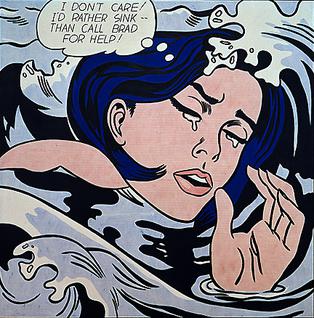


*Dempsey Amy, Art in the Modern Era, Harry N. Abrams Inc.,2002
 Monument of the Third International
Monument of the Third International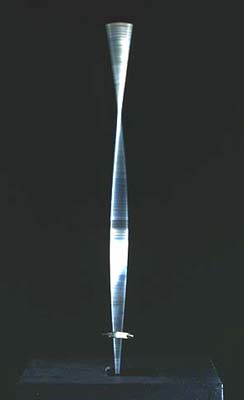 Kinetic Construction
Kinetic Construction
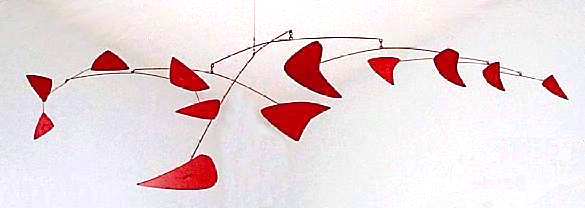 Red Mobile, Alexander Calder
Red Mobile, Alexander Calder Red Mobile, Alexander Calder
Red Mobile, Alexander Calder
 Black Square-Kazimir Malevich
Black Square-Kazimir Malevich Theo van Doesburg- Counter-composition V
Theo van Doesburg- Counter-composition V June Harwood
June Harwood





 Morris Louis
Morris Louis Shaped Canvas, Frank Stella 1967
Shaped Canvas, Frank Stella 1967
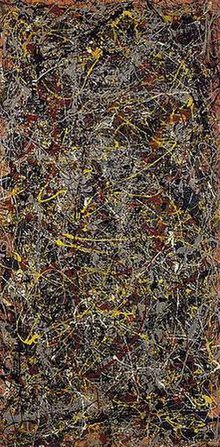 Jackson Pollock
Jackson Pollock Jane Frank
Jane Frank Hans Hofmann
Hans Hofmann Salvador Dali
Salvador Dali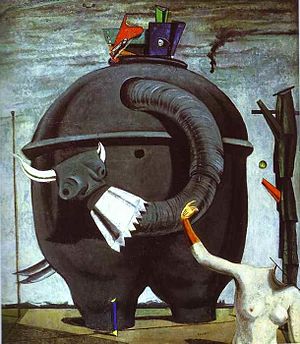 Max Ernst
Max Ernst A Night at Saint Jean-de- Luz
A Night at Saint Jean-de- Luz The Red Tower
The Red Tower Love Song
Love Song





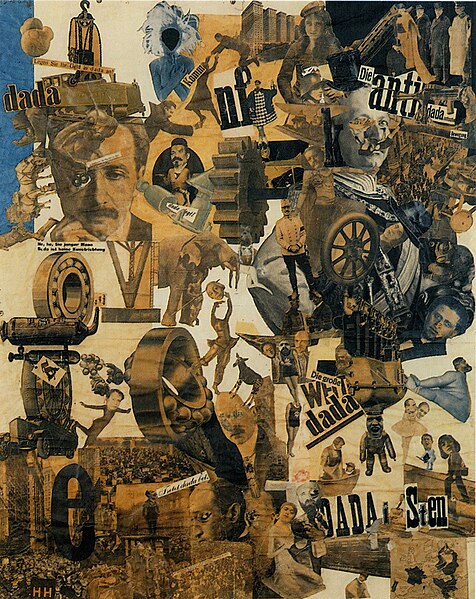 Hannah Höch-
Hannah Höch-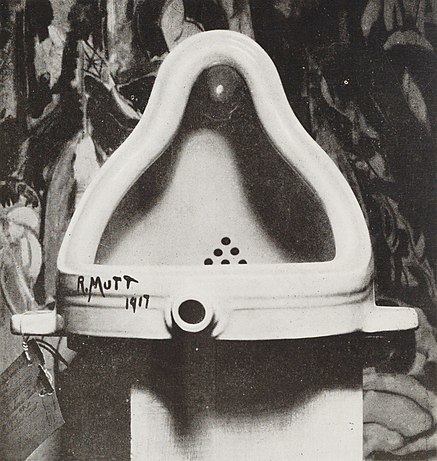

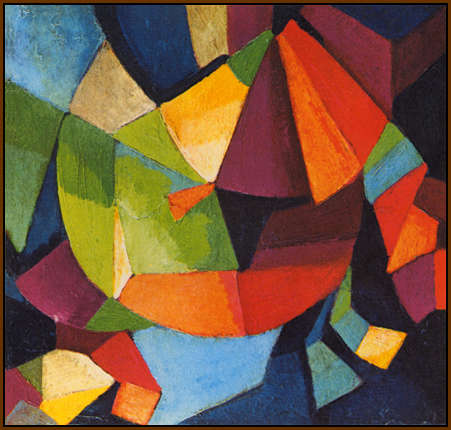

 Vase of Flowers-MacDonald-Wright
Vase of Flowers-MacDonald-Wright Portrait of Picasso
Portrait of Picasso
 Harlequin with Guitar
Harlequin with Guitar
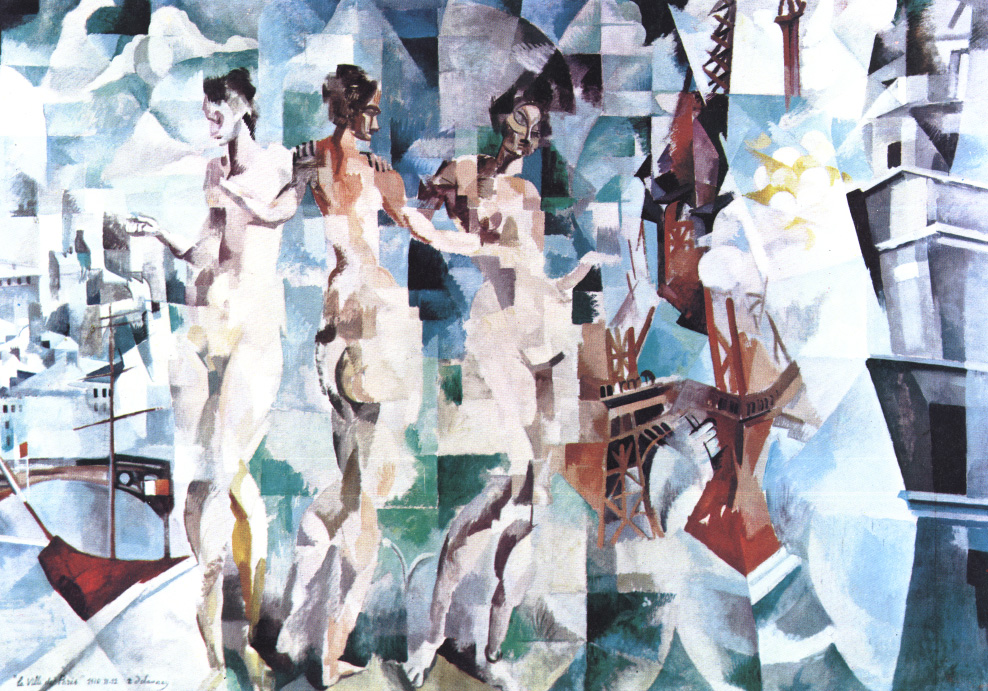
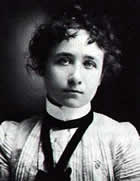 Because of the official art academies were being closed to women, she had to improve herself privately, first at the Ladies School of Art in Dusseldorf. After that she studied at Phalanx School which was founded by Wassily Kandinsky. They became lovers traveled and painted together for years but their relationship ended because of Kandinsky marrying another women.
Because of the official art academies were being closed to women, she had to improve herself privately, first at the Ladies School of Art in Dusseldorf. After that she studied at Phalanx School which was founded by Wassily Kandinsky. They became lovers traveled and painted together for years but their relationship ended because of Kandinsky marrying another women.

 The Blue Rider-1903-Wassily Kandinsky
The Blue Rider-1903-Wassily Kandinsky
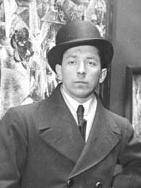
 Dynamism of a Soccer player
Dynamism of a Soccer player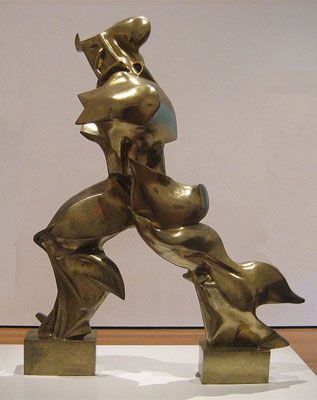
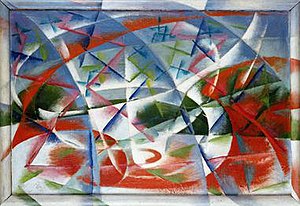 Giacomo Balla ,Abstract Speed + Sound
Giacomo Balla ,Abstract Speed + Sound Example of Futuristic architecture by Antonio Sant'Elia
Example of Futuristic architecture by Antonio Sant'Elia Natalia Goncharova
Natalia Goncharova